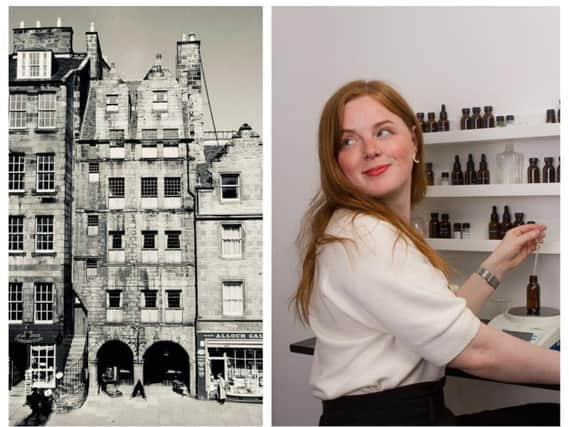How the pong of 17th Century Edinburgh is taking visitors on a trip through time


Gladstone's Land in the Royal Mile is being transformed by the power of scent as part a new level of sensory experience at six National Trust for Scotland properties this winter.
Clara Weale, an independent perfumer based in Glasgow, has been working with the trust to recreate the smells once found in the wealthy tenement, one of the oldest buildings on the Royal Mile, and indeed those less-pleasant whiffs encountered in the streets outside.
Advertisement
Hide AdAdvertisement
Hide AdMs Weale said: "Previously, Gladstone's Land didn't smell of very much, there is a sense of a slightly-old-building smell but nothing really beyond that.
"In the Painted Chamber. we have selected herbs which create a historically accurate scent from the 17th Century but one which also contains the energy and the enthusiasm of the staff and the volunteers who are looking after the building."
The Painted Chamber scent contains Lady Bedstraw, which was used to stuff mattresses with one of its properties - coumarin - useful in fending off fleas.
Southernwood has also been placed in the room, with the plant traditionally used to keep clothes and furniture protected from moths.
Advertisement
Hide AdAdvertisement
Hide AdThyme and lavender, traditional perfume scents of the day, can also now be detected in the Painted Chamber.
In the kitchen, the smell of a log fire will now greet visitors as well as the strong whiff of spices in reference to the merchants who traded these exotic goods on the ground floor of Gladstone's Land.
In the Georgian Room, Ms Weale has introduced an interpretation of a portrait hanging on the wall which features Lady Elizabeth holding a basket of peaches.
Ms Weale said: "Those living in Gladstone's Land would definitely have been trying to make their house smell better than it did out on the streets.
Advertisement
Hide AdAdvertisement
Hide Ad"You see references to 17th Century Strewing herbs, which are basically herbs thrown on the floor.
"There also wasn't such a delineation between herbs and spices used for cooking, medicine and fragrance. They were all one of the same."
Ms Weale said she had used wills and inventories from Gladstone's Land to help build a picture of everyday life at the house and get a feel for type of smells it would once have been filled with.
She said there were very few contemporary accounts of perfumes used in 17th Century Scotland, although the perfumer did come across one for 'Scottish handwater'.
Advertisement
Hide AdAdvertisement
Hide AdThis was made by making layers of herbs and burying them underground for six months before distilling them.
Then, the herbs were mixed with 'common water' to make the 'sweet fragrance'.
Ms Weale said she was pleased with the reaction to her Gladstone's Land scents.
"I think the nicest thing was staff said it smelled like it should always have been there. For me, that is job done.
Advertisement
Hide AdAdvertisement
Hide Ad"I don't want people to walk in and say 'oh, there is a strong smell in here'. I want people to walk in and think it is just part of the fabric of the building.
"I think we have all had a kind of experience of how scent can bring back memories or emotions.
"We experience sccent in the part of the brain called the lymbic system, which is the part of the brain that deals with emotion, memory, and feeling. It deals with quite visceral things.
"Compared to our other senses, with smell we are not overly cynnical. Most of the time were are not conscious about what we are smelling. It is really powerful to reach people on this level."
Advertisement
Hide AdAdvertisement
Hide AdIn addition to the atmospheric scents now found through the rooms at Gladstone's Land, Ms Weale has introduced two less pleasant whiffs for those wanting the full genuine 17th Century experience.
She added: "There is the smell of an open grave, drawing upon histories of body snatching in Edinburgh. There is also a 'gardy loo' scent, bringing to mind the stench of the streets.
"There are used more as part of the guided tours, to make sure that people aren't smelling them unless they want to."
She said the 'gardy loo' scent was manufactured to carry a hint of urine and a general scent of squalor.
Meanwhile, the open grave contains a soil accord, with a sweaty note and an undertone of rot and decay.
Both will be held in apothocary jars, so people can choose to smell them if they wish.
